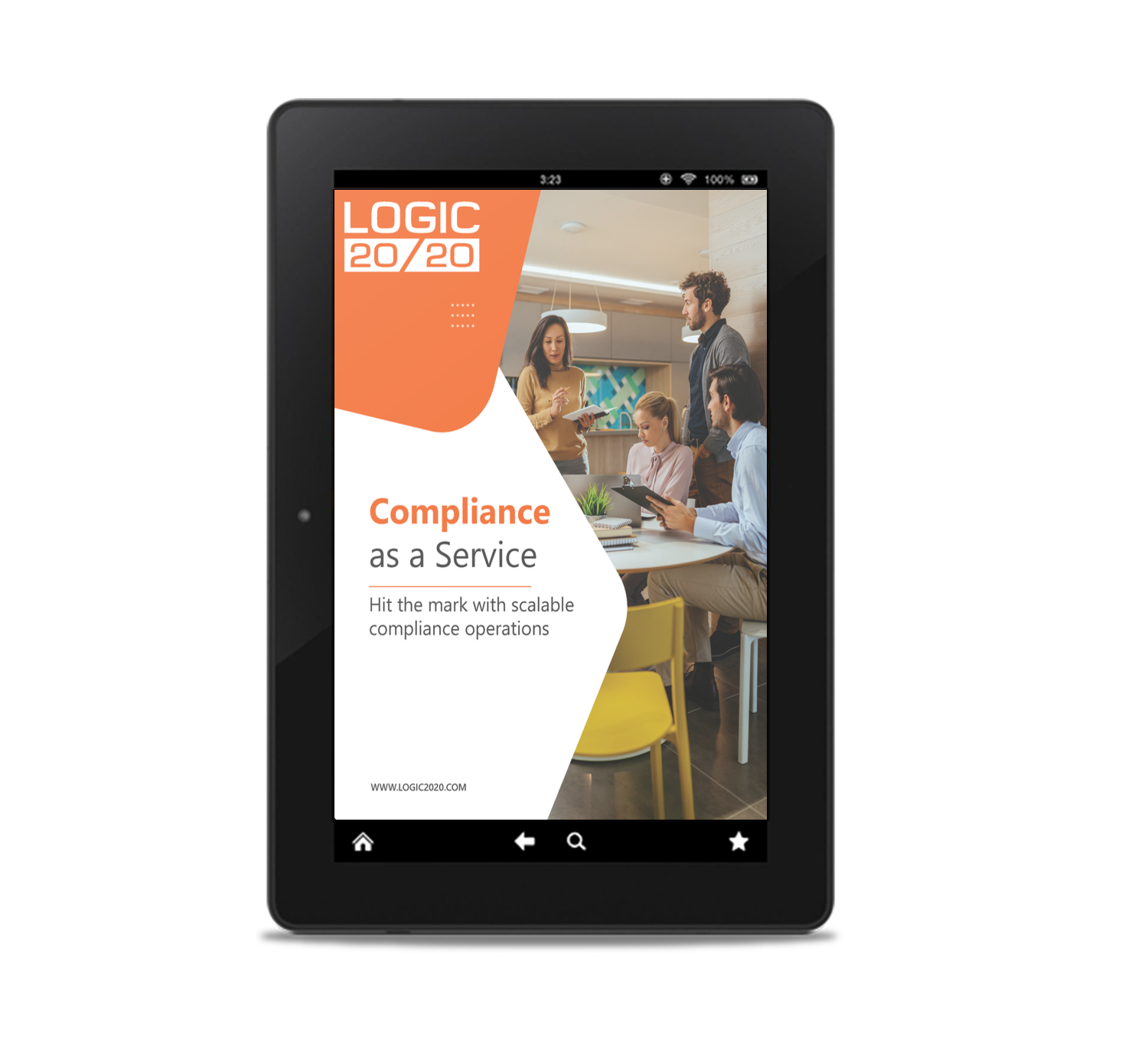7-minute read
Quick summary: Consolidating fragmented platforms and siloed processes is essential for organizations aiming to unlock sustained agility, efficiency, and growth.
Fragmented processes and disconnected technologies can quietly sabotage an organization’s potential—draining resources, stalling innovation, and eroding its competitive edge. Organizational silos lead to duplicated efforts, misaligned objectives, and reduced productivity, costing businesses up to 30 percent of their annual revenue. Simultaneously, platform ecosystems have become increasingly complex, with enterprises managing an average of 976 applications while integrating only about 28 percent of them. This lack of integration not only slows decision-making, but also contributes to significant waste, as evidenced by businesses spending an average of $18 million annually on unused SaaS licenses.
Adding to these operational challenges, regulatory compliance demands have intensified. A recent Gartner survey reveals that 51 percent of compliance and risk leaders rank “navigating complex regulations” among their top business concerns. To address these interconnected issues, forward-thinking companies are prioritizing comprehensive platform and process consolidation strategies. By unifying processes and streamlining technology stacks, organizations can break down silos, significantly reduce redundancy, optimize operational efficiency, and achieve sustained compliance and scalability.
Article continues below.

Compliance as a Service (CaaS) ebook
We will never sell your data. View our privacy policy here.
The Logic20/20 approach: A holistic strategy for consolidation
Effective consolidation isn’t just about unifying tools or reengineering processes; it requires aligning with both the unique culture and the strategic goals of an organization. When working with clients, our first step is always aimed at gaining a clear, holistic view of their current environment, including organizational challenges, workflow bottlenecks, and strategic objectives. This allows our teams to craft tailored approaches rather than applying generic solutions.
Centralizing and rationalizing efforts with a PMO
One essential element we leverage is a dedicated project management office (PMO). Acting as the integration catalyst across teams and platforms, the PMO provides clarity and accountability. Project managers within the PMO facilitate alignment by connecting business stakeholders with technology teams to ensure open communication and shared goals. Their role extends beyond mere coordination; they provide consistent oversight and maintain momentum throughout the consolidation journey.
Building agility into project teams
Recognizing that consolidation involves diverse interconnected initiatives, we deploy agile, cross-functional teams that can rapidly shift focus among various activities within the broader consolidation strategy. Rather than rigidly adhering to predefined tasks, our teams dynamically respond to evolving priorities and shifting circumstances, enabling clients to:
- Quickly respond to internal shifts or external market pressures.
- Maintain business continuity even as significant changes are underway.
By fostering flexible, collaborative teamwork, we help reduce disruption and accelerate the realization of benefits.
Engaging proactively through change management
Even the best-planned consolidation initiative can falter without thoughtful change management. Recognizing this, we focus proactively on stakeholder engagement from the outset—securing executive sponsorship, communicating continuously, and setting clear expectations around adoption and long-term success.
We guide organizations through key challenges such as:
- Securing employee buy-in early to reduce resistance.
- Developing structured training and communication plans to support ongoing adoption.
Leading with empathy and organizational insight
Ultimately, the success of consolidation depends heavily on understanding people. Our consultants bring strong “soft skills” and organizational empathy to every initiative, taking time to grasp organization-specific concerns and internal dynamics. By focusing on aligning technology and processes authentically with each organization’s values, we drive consolidation outcomes that are both sustainable and meaningful.
From complexity to clarity: Two consolidation journeys
The value of a holistic consolidation approach becomes clear when considering real-world applications. The following examples illustrate how strategic PMO leadership, proactive change management, and agile project teams can deliver tangible results.
Case study 1: Transforming a global technology firm’s marketing organization
A global technology leader faced significant operational challenges driven by organizational silos and fragmented marketing technology (MarTech) platforms. With thousands of employees working in separate teams—each managing its own workflows and tools—the organization was experiencing:
- Redundant and disconnected processes
- Overlapping software licenses and costly inefficiencies
- Inconsistent marketing messaging and customer experiences
- Increased risk from compliance gaps and security vulnerabilities
To address these challenges, our team established a dedicated PMO to act as the organizational “glue” in enhancing coordination among previously siloed teams. Project managers within the PMO facilitated communication and collaboration between business stakeholders and technical platform and engine owners. By adopting a unified, proactive change management strategy, we secured executive sponsorship early and gained widespread organizational support, minimizing resistance and encouraging rapid adoption.
The strategic intervention delivered significant impacts:
- The previously fragmented MarTech landscape became a consolidated, integrated system, enhancing data security and regulatory compliance.
- Eliminating redundant software licenses reduced operating costs.
- Employees benefited from clearer, more unified processes, fostering greater internal collaboration and more consistent customer interactions across marketing channels.
Through close collaboration between MarTech and the product owners’ team, we optimized the process engine supporting the client’s customer-facing site—driving a nearly 50% year-over-year increase in organic traffic and more than a 10% boost in engaged traffic.
Case study 2: Achieving agility through data privacy consolidation
In another initiative, Logic20/20 partnered with a global gaming enterprise to streamline their data privacy operations. Confronted by an increasingly complex regulatory landscape, the organization needed greater agility and responsiveness in addressing compliance challenges spanning multiple jurisdictions.
Our approach focused on consolidating scattered privacy processes and standardizing compliance tools into a unified platform. This consolidation enhanced visibility into compliance activities, reduced redundancies, and equipped teams to proactively manage regulatory changes. The outcomes included significantly improved responsiveness to compliance issues, reduced risk exposure, and enhanced agility in navigating regulatory complexity.
Together, these cases highlight how strategic consolidation of processes and platforms—guided by focused project management, agile collaboration, and thoughtful change management—can yield measurable operational improvements, cost efficiencies, enhanced employee engagement, and strengthened compliance capabilities.
Breaking down organizational silos: A practical guide
Organizational silos create significant barriers to collaboration, decision-making, and efficiency. When teams operate independently, critical information remains trapped, and duplication of effort becomes the norm. To move toward greater agility and efficiency, organizations must strategically dismantle these silos.
Step 1: Identify and map organizational silos
Start by assessing your organization’s current structure and operations:
- Conduct internal assessments and surveys to pinpoint where collaboration fails or communication stalls.
- Document workflows across teams to identify overlapping tasks or responsibilities.
- Highlight specific pain points or bottlenecks caused by siloed operations.
Step 2: Establish cross-functional governance
Create a centralized governance structure, such as a PMO, to coordinate interdependencies, clearly define roles, and streamline communication.
Step 3: Secure executive sponsorship and leadership buy-in
- Engage executives early to champion the consolidation effort and communicate its strategic value.
- Regularly reinforce executive messaging to ensure sustained organizational alignment.
- Clearly demonstrate how de-siloing supports overarching business objectives.
Step 4: Foster proactive change management
Implement proactive change management practices—regular communication, training, and feedback—to ease adoption and support lasting change.
Step 5: Measure, iterate, and sustain
- Define clear, measurable outcomes such as improved workflow efficiency or reduced duplication.
- Regularly collect feedback from employees to assess the effectiveness of consolidation initiatives.
- Adjust your approach based on this feedback, reinforcing positive changes and correcting missteps quickly.
Organizations that systematically implement these steps typically see meaningful improvements in productivity, employee satisfaction, and overall organizational agility.
Consolidating technology platforms: A practical guide
Complex technology ecosystems often grow organically, leaving organizations with multiple redundant or overlapping platforms. These technical silos create challenges including fragmented data, increased licensing costs, compliance vulnerabilities, and operational inefficiencies. Successfully consolidating and simplifying technology stacks requires a practical, structured approach.
Step 1: Conduct a technology inventory and assessment
Begin with a comprehensive audit of existing platforms:
- Catalog all current tools, licenses, and users to identify overlaps and redundancies.
- Evaluate each platform’s functionality, integration capability, and alignment with business objectives.
- Assess the compliance status and security risks for each platform.
Step 2: Identify opportunities to streamline and consolidate
Next, carefully analyze the inventory results to identify clear consolidation opportunities:
- Highlight tools that serve similar or identical functions, such as multiple marketing automation or collaboration platforms.
- Prioritize platforms for consolidation based on cost, usability, scalability, and integration potential.
- Engage key stakeholders to ensure alignment and reduce resistance when sunsetting redundant platforms.
Step 3: Bridge business needs and technical capabilities through effective project management
- Clearly define business requirements and map them to specific technology capabilities.
- Establish project management processes to manage consolidation timelines, resources, and risks effectively.
- Communicate transparently across business and technical teams to ensure smooth transitions and effective implementation.
Step 4: Implement consolidation with robust change management
Support users during platform transitions with clear migration plans, targeted training, and continuous feedback mechanisms.
Step 5: Monitor and measure consolidation success
Continuously evaluate consolidation outcomes and optimize further as needed:
- Track specific metrics such as licensing cost savings, security improvements, and user satisfaction.
- Regularly review compliance improvements and reduced vulnerabilities resulting from streamlined systems.
- Make iterative adjustments to further enhance efficiency and security.
Organizations following this structured methodology can expect tangible improvements, including significantly reduced licensing costs, enhanced security and compliance posture, and a smoother, more consistent customer experience across integrated technology platforms.
Consolidation as a continuous journey
The most successful consolidation efforts never truly end—they evolve. Once processes and platforms are unified, organizations must shift their attention to sustaining these improvements over the long term. This requires building continuous reassessment and refinement into organizational habits.
Companies that excel at consolidation regularly revisit and challenge their processes, monitoring industry trends, technological advancements, and internal feedback to identify new opportunities for improvement. They leverage metrics—such as user satisfaction, operational efficiency, and compliance outcomes—to gauge ongoing effectiveness and adapt as needed. Consolidation is most powerful when organizations remain open to incremental changes rather than seeing success as a one-time milestone.
By making continuous optimization part of their organizational DNA, enterprises don’t just consolidate—they continually adapt and refine, positioning themselves for resilience, flexibility, and sustained growth.
A catalyst for growth
Forward-thinking leaders understand consolidation as a strategic investment rather than a tactical fix. Beyond the immediate financial benefits, thoughtful consolidation transforms how organizations operate, fostering a culture of agility, collaboration, and continuous improvement. When employees can rely on streamlined workflows, they can stay focused on creating value by innovating, building relationships, and enhancing customer experiences.
Yet consolidation is nuanced. Success depends not only on smart technology choices, but also on deep understanding of organizational dynamics and human behaviors. Executives must carefully select consolidation partners who balance technical expertise with the empathy and insight needed to navigate complexity and drive meaningful change. Ultimately, the enterprises that approach consolidation as a continuous strategic endeavor—guided by capable, experienced partners—will set themselves apart in an increasingly competitive landscape.

Drive real results with a smarter digital strategy
Logic20/20 helps you close the gap between strategy and execution through a collaborative approach and deep expertise in digital transformation. Our teams deliver consistent, measurable value through:
- Product, project & change management
- Compliance services
- Agile transformation
- Solution assessment & planning


